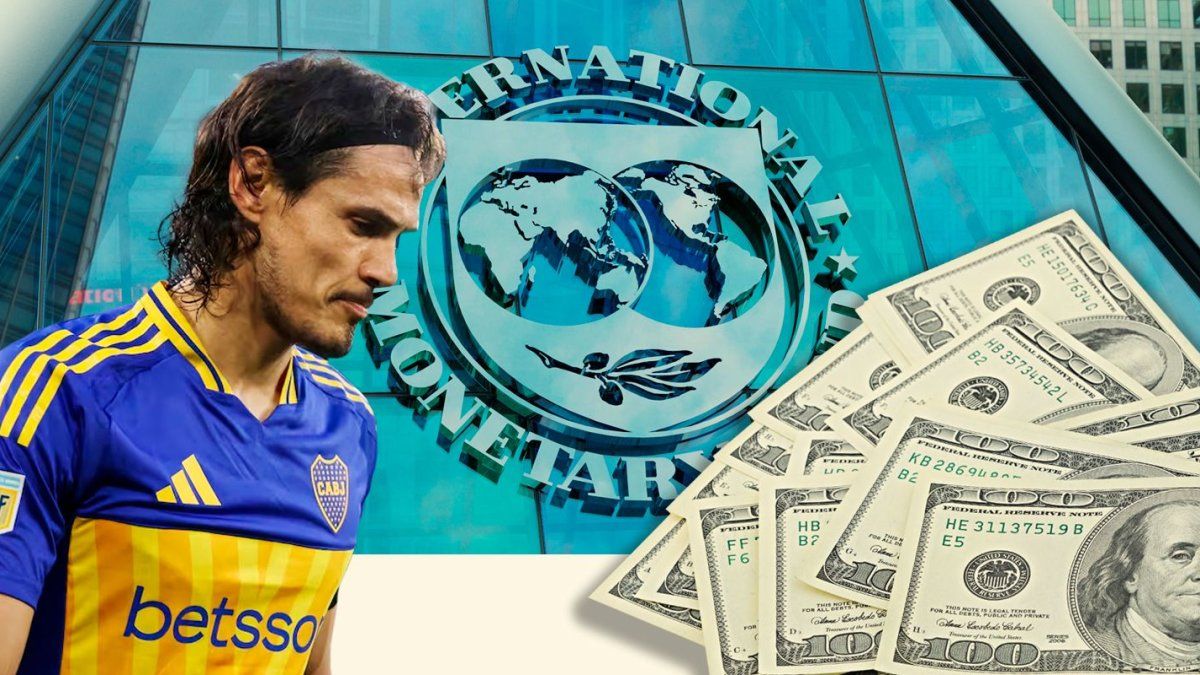The idea is not surprising, but perhaps, in brief sips, it generates concern among the legion of followers who measure the evolution of the dollar. In the background, they know Lfans suffering the vicissitudes of Argentine football. River, Boca, Racing Club, Students, San Lorenzo And so many others can attest. The local championship begins to populate from players who undertake the return of their clubs in Europe and other squares.
They are not number one, but they are not the ones who warmed, indolent, the substitute bank. In some cases, they are stars that wilt in the heat of empty training. The data anticipated it at the end of January and returned to charge visibility these days. Argentine football begins to populate of soccer players who earn at least one million dollarssomething that until a while ago did not happen. Exchange delay or advanced prices? The strong Argentine weight comes to stay (with the best players)?
Some cases are those of Sebastián Driussi and Gonzalo Montiel (River), Ander Herrera, Alan Velazco, and before Edinson Cavani (Boca), Lucas Alario and Facundo Farías (students), or the “Tico” Keylor Navas (Newell’s).
Many more stars arrived on these shores tempted by the renewed purchasing power of the peso in relative terms with the dollar. Even players who were about to be exported abroad were tempted to stay in the country. Mexico ceased to be such an attractive square.
They do not reach dollars (or there are plenty of weights) for this rate of exchange
There is an equation that burns. The Argentine football, they already saw it in the 90s in the IMF. With the country risk bouncing to the area of the 750 basic points and a level of reserves, as the IMF is measured, which is almost at the same level as when it assumed Javier Milei The Presidency is increasingly relevant to the next agreement with the Fund. Dollars are missing or, in any case, they do not abound with the exuberance suggested by the exchange rate. As the economist usually mentions Carlos Melconianthe real economy is much slower in terms of competitiveness than what prefigures the speed at which the Argentine weight ended. Who adapts to who?
In translation, the current scheme, the low level of reserves, means that, to less autonomy of foreign exchange, The chance moves away from refinancing debt matches, a greater dependence on the international body is approaching. The paradox is easy to understand: if at the end of the day, the economic and financial program ends with less reservations and no more, then the country risk is probable to remain at these levels or even continue with the rise. Therefore, the possibility of refinancing debt moves away, which adds more pressure on the reserves and contributions of the US ticket.
The question is whether this, the exclusive dependence of the IMF and the Carry Trade, makes another issue transitive: To what extent can the government avoid the dramatic demands of the fund to make the dollars that serve to recapitize the Central Bank?
Trump and Crawling faster from the IMF
No doubt. The photo between Donald Trump and Javier Milei of the last weekend sought to move certain ghosts away. For now, the imposition of the fund, once the conversations have been advanced, push Minister Luis Caputo to A reversal of the Crawling PE policy of 1% and the cancellation, gradual, of the Blend dollar. In the IMF’s opinion, these would be acceptable measures to travel the coming months to the mid -term elections. Abandon the devaluation of 1% monthly? Devaluate to 3% monthly or perhaps more? Some time ago, the one who approached a similar recommendation was the “inorganic agent” Domingo Cavallo.
The question that underlies is if, in exchange for a future correction in exchange policy, the IMF can inject, now, the US $ 11,000 million that the government wants. If this were so, then we would have to talk about an October or November with a awakening for the MEP, CCL dollar and, therefore, the blue dollar.
With this in mind, the Government’s commitment It is strengthening – not weakening under any aspect – the Carry Trade. For this, the bets are several and range from the recoil of the crawling PEG from 2% to 1% – which cleared yield for investors – until the mantra of the “we are not going to devalue” that was interrupted in recent days by the cryptogate, but that will surely return. The intervention on the exchange gap also counts.
What does JP Morgan say about exchange backwardness
According to a report by JP Morgan, the Central Bank would have allocated almost US $21,000 million to intervene in the financial dollar. Is there changing delay? Precisely Facundo Gómez Minujín, president of JP Morgan Argentina, responds to an Infobae consultation: “The moments where the real exchange rate was more backward were the years of “La Tabita”, and during convertibilitywhen it was equivalent to a value of 600 and 800, respectively. In the years of economic crisis, the exchange rate reached 6,000 levels during hyperinflation, 3,200 during the Malvinas War, and almost 2,400 during the departure of convertibility and during the presidency of Alberto Fernández (in this case the parallel exchange rate).
With these numbers as a reference, it is true that the official exchange rate and the parallel were delayed in recent months. However, it is very important to note that we were coming from years where the parallel exchange rate was at levels of economic crisis. It was expected and desirable that it be appreciated having a consistent program. ” The fact is that, in JP Morgan’s opinion, the first thing the government will do is lift the “Blend dollar” at the request of the IMF, which could necessarily derive into a greater exchange gap.
Days ago, to feed the carry trade, The Central Bank decided to make the restrictions on access to dollars more flexible And he enabled banks to finance all types of people and companies in foreign currency, despite not having their income linked to the US currency. As the field said, the measure aroused rapid warnings of economists about their implications. This Tuesday, the Moody’s risk rating operator analyzed the initiative and said it could help boost credit, although it warned that financial entities will be exposed to the possibility of suffering higher levels of default. Attention.
Source: Ambito




